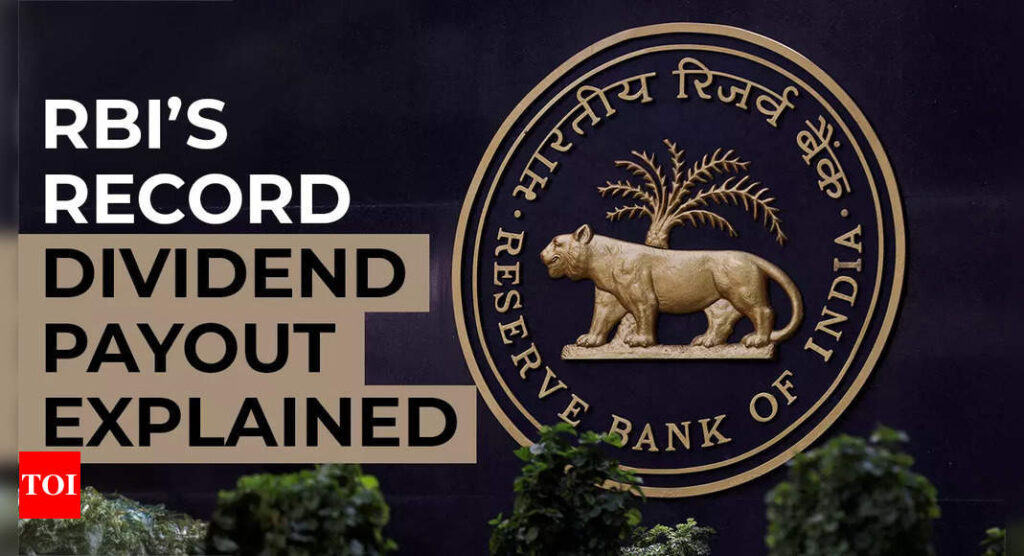Several factors contributed to RBI’s higher earnings in FY24.
Firstly, the central bank’s $469 billion investments in risk-free sovereign securities of developed countries, particularly the $250 billion in US treasury bills, yielded returns of nearly 4%, significantly higher than the previous year.
Secondly, the interest earned from short-term lending to liquidity-starved commercial banks through repurchase agreements (repo) increased, as the money market experienced a ‘deficit’ situation in FY24, unlike the ‘surplus liquidity’ in FY23.
Lastly, RBI booked gains through its ‘gross sale’ of dollars.
RBI has managed to double the size of the dividend it will pay to the government, compared to what was initially stated in the interim budget on February 1. This increase can be attributed to the gains made by the central bank from selling dollars from its foreign exchange reserves to support the rupee.
The RBI earns a ‘profit’ on every dollar it sells, which is calculated as the difference between the current rupee/dollar exchange rate at the time of sale and the average cost at which it had purchased dollars in the past. For example, if the average purchase price is 78 and the RBI sells dollars at 83, it makes a gain of Rs 5 per dollar sold. With gross sales exceeding $150 billion in FY24, a significant portion of the dividend can be explained by these transactions, which were primarily carried out to generate the payout amount.
The RBI’s ‘net purchase’ of dollars, which is the difference between gross purchase and gross sale in the forex spot market, provides a clearer picture of the situation. In FY24, the RBI made a ‘net purchase’ of $41 billion due to a balance of payment surplus.
When the rupee comes under pressure, the RBI sells dollars to support the currency. In a hypothetical scenario where there is a $5-billion shortage, the RBI has two options: directly sell $5 billion to increase the dollar supply, or sell $25 billion and buy back $20 billion, generating a net supply (or sale) of $5 billion. The RBI chose the latter approach during the year because gains can be booked through gross sales. The higher the gross sale, the greater the gains from dollar sales, providing more room to declare a larger dividend.
RBI Dividend FY25 Outlook:
RBI’s ability to generate similar profits and pay substantial dividends in the coming years may be limited. The reason behind this is that when the RBI makes significant dollar purchases, as it did in FY24, the average cost of dollars in its reserves basket increases.
With the current exchange rate hovering around 82 or 83 rupees per dollar, the average cost of reserves is likely to rise from 78 to a higher figure, such as 80. Consequently, unless the rupee depreciates further this year, it would be challenging for the RBI to record comparable gains in FY25. This situation raises the question of whether Shaktikanta Das’s successor will face difficulties in announcing an impressive dividend next year.
Also Read | India closes gap with China as weight in MSCI equity index hits record high; $2 billion inflows expected
Determining the answer to this question is not straightforward due to the presence of numerous variables. Factors such as potential declines in earnings from other sources, market volatility, and the need to allocate more reserves as buffers can all influence the outcome.
Under Das’s leadership, the RBI has taken a prudent approach by maintaining a higher buffer against contingent risks, setting it at the upper band of 6.5% of the book, which is within the allowable range of 5.5-6.5%. Additionally, the central bank is required to allocate funds for economic capital, which is determined by a dynamic model and is connected to market volatility. It is believed that this allocation has also been increased slightly from its historical level of 20.5%.
Supported by higher yields in international markets and aggressive foreign exchange sales, Das has made his contribution. The decision now lies with the North Block on whether to focus on reducing the fiscal deficit or increasing spending.

